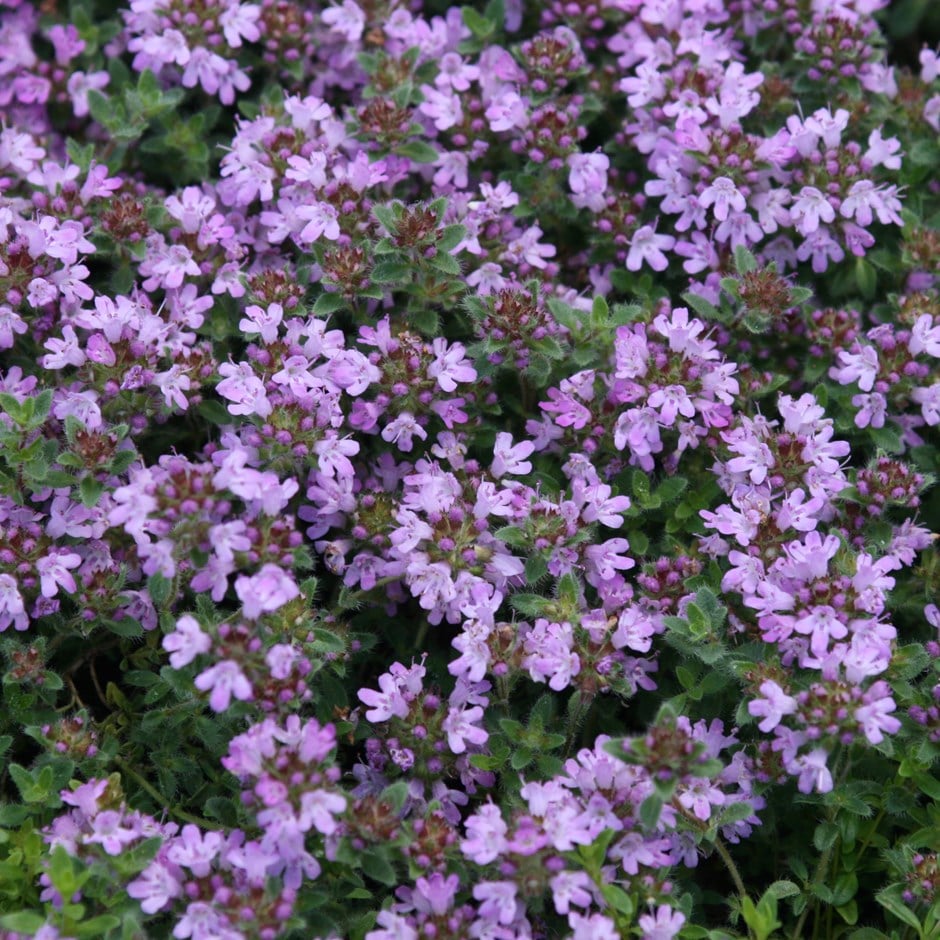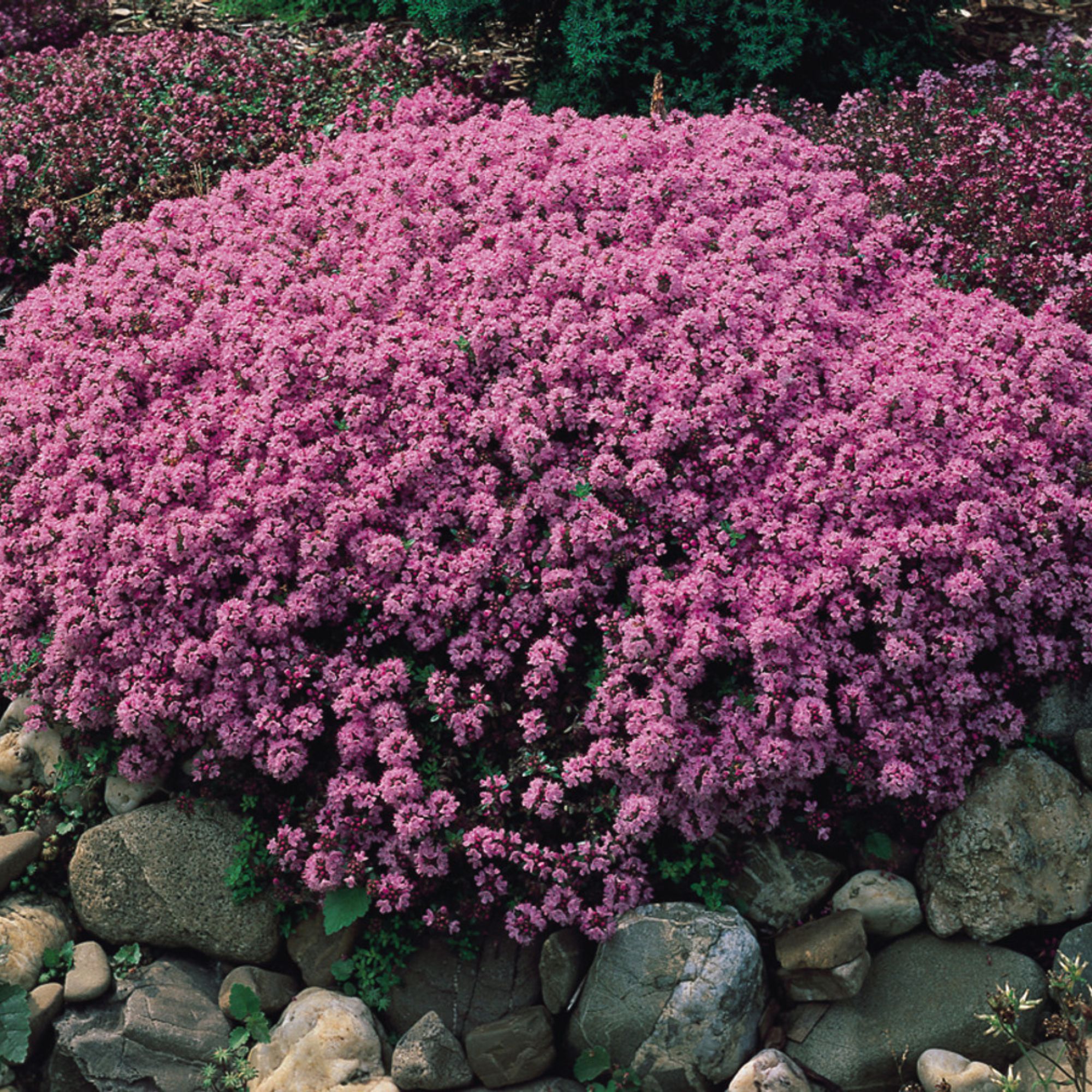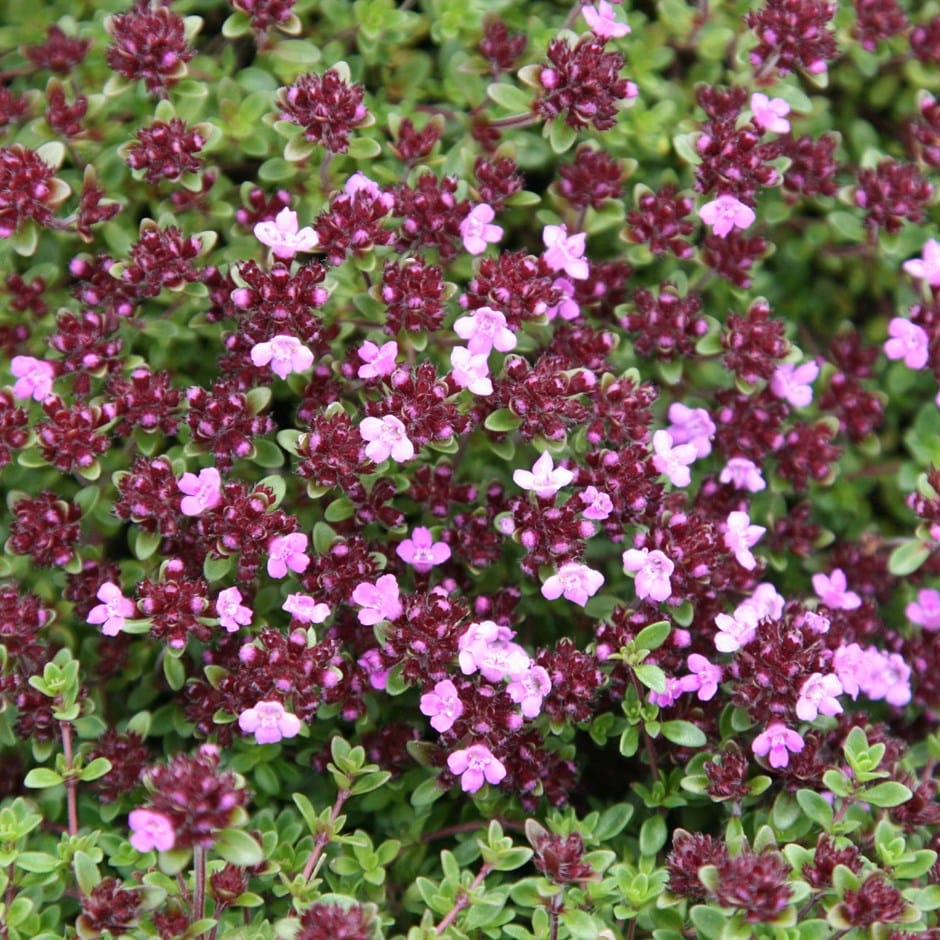The red creeping thyme lawn is a beautiful new take on traditional grass – here's how to grow one
It's effortless and unique


If you’re tired of looking out to a plain grass lawn, learning how to grow a creeping thyme lawn could be the next best thing you do for your garden.
This purple-flowered creeping perennial is a beautiful, low-maintenance lawn alternative, and it’s a popular choice for those looking to grow a tapestry lawn. It's great for wildlife, too.
To help you get started, we’ve checked in with gardening experts and thrown together a guide on how to grow a red creeping thyme lawn from scratch.
1. Make sure the conditions are right
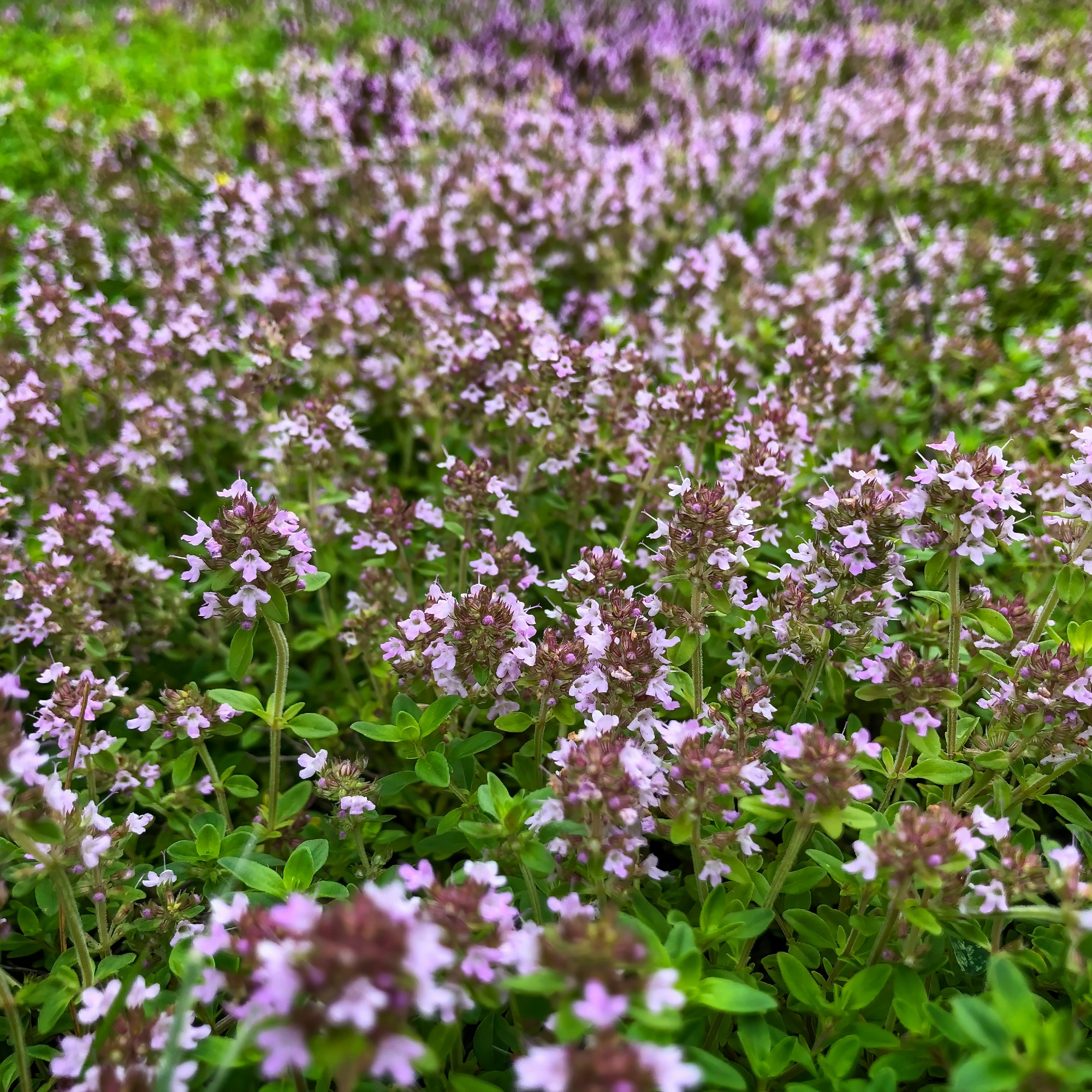
Before you get started, you’ll need to make sure your garden fits the bill – because a successful red creeping thyme lawn will depend on a few factors.
‘You’ll want to make sure that you’ve a sunny spot that gets lots of natural sunlight,’ says Liam Cleary, gardening expert at the Old Railway Line Garden Centre. ‘It does require patience, too. It can take up to three years to achieve a ‘carpet’ look.’
If your lawn usually receives a lot of foot traffic, it might be better to avoid this perennial.
‘If you have pets, children or want to walk on it, then forget it,’ warns garden designer Harriet Worsley. ‘It’s just not tough enough for boots, shoes and heavy humans – let alone running children and capering dogs.
‘However, for a lawn that is only really viewed, or one that has paving stepping-stones running through it, it will grow into a beautiful verdant mat of groundcover.’ In fact, coupling a red creeping thyme lawn with stepping stones is a brilliant, cheap, DIY garden path idea.
2. Buy the plants
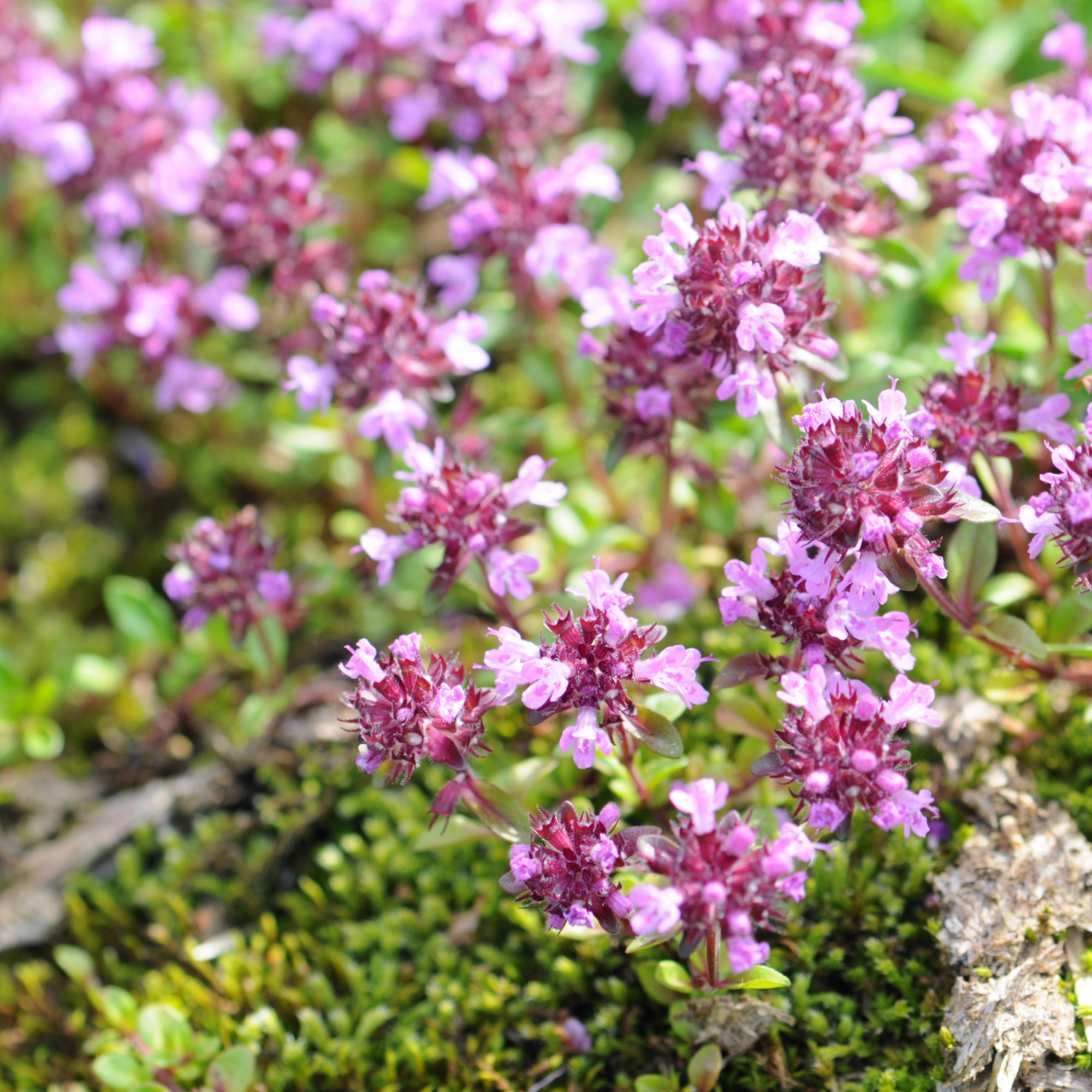
A red creeping thyme lawn isn’t usually grown from seed – instead, you’ll need to buy the plants.
‘The drawbacks are that it is grown from plants, rather than seed, so a larger area lawn can become expensive to start with,’ says Liam.
If you’re keen to start a creeping thyme lawn, we’re in the perfect season to get started.
‘To grow, begin the process in spring,’ says Liam. ‘Plant in well-drained soil, and ensure you water whenever there’s a dry spell for at least the first year.’
Where to buy creeping thyme plants:
3. Monitor growth
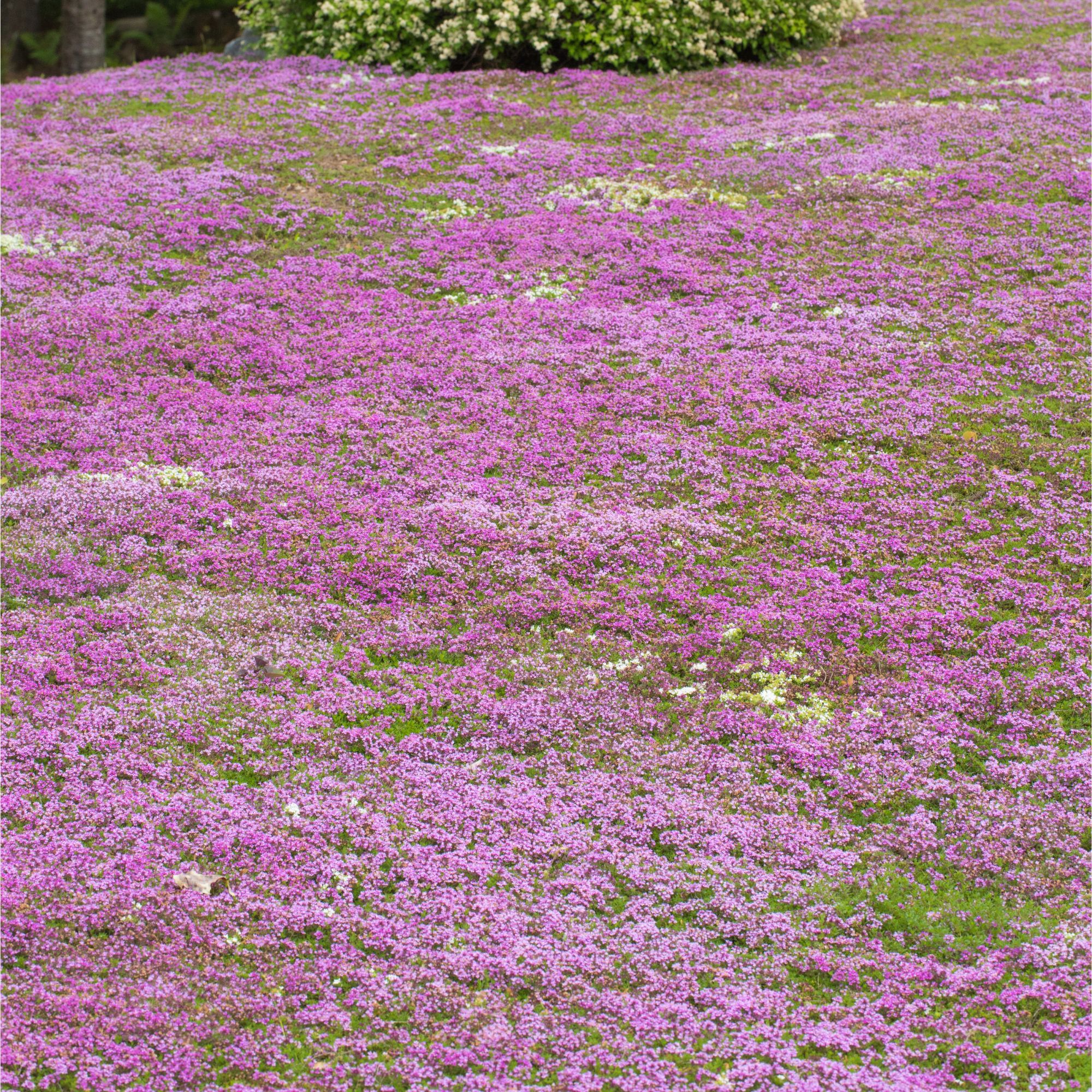
A red creeping thyme lawn can take a while to fully establish, but the results are worth the wait.
‘In the first few months, the plant will establish its root system,’ explains Chris Bonnett, garden expert and owner of GardeningExpress.co.uk. ‘This growth, to begin with, can be slow. After that, it will begin spreading outwards, and you should have a dense mat of coverage within one to two years.’
4. Hand weed (at first)

As your creeping thyme lawn grows, you’ll need to do very little besides watering it during dry spells. Even though it’s one of the best ground cover plants for preventing weeds, you’ll still need to keep on top of some light weeding while it establishes.
‘Ensure you hand weed regularly to ensure the plants can knit together,’ explains Liam.
You won’t need to mow it, though.
‘It’s low-maintenance and requires no mowing at all as it usually stays low, around a few inches tall,’ says Chris.
5. Replenish the plants

Like most plants, a red creeping thyme lawn won't last forever, but there are ways to replenish the plants over time.
'To maintain the lawn, cut back after flowering to remove the spent flower heads and some of the soft green wood,' advises Liz Zorab, gardener, writer and BBC Radio Wales gardening expert. 'This should encourage plenty of new growth.'
You can also think about replacing the plants over time. 'Red creeping thyme lawns can get a bit patchy over time, as the plants mature and become woodier,' explains Liz. 'To remedy this, either lift and replace with new, young plants, or cut them back fairly hard, ensuring that you don’t cut it right back to the very old wood, as it may not regrow if you do.'
Will you be learning how to grow a creeping thyme lawn this year? We'd love to hear your thoughts!
Get the Ideal Home Newsletter
Sign up to our newsletter for style and decor inspiration, house makeovers, project advice and more.

Sophie joined the Ideal Home team as Gardens Editor in June 2024. After studying English at Royal Holloway, University of London, she began writing for Grow Your Own, which spurred on her love of gardening. She's tried growing almost every vegetable under the sun, and has a soft spot for roses and dinnerplate dahlias.
As Gardens Editor, Sophie's always on the lookout for the latest garden trend. She loves sharing growing hacks for every space, from herbaceous borders to balconies.
You must confirm your public display name before commenting
Please logout and then login again, you will then be prompted to enter your display name.
-
 Mary Berry’s favourite flower to grow in the garden is a low-maintenance winter bloomer - and you can plant it right now
Mary Berry’s favourite flower to grow in the garden is a low-maintenance winter bloomer - and you can plant it right nowThese gorgeous purple blooms will brighten up your garden
By Kezia Reynolds
-
 Will a conservatory add value to your home and how can you maximise it?
Will a conservatory add value to your home and how can you maximise it?This is what the pros say
By Amy Reeves
-
 I’ve been looking for a new signature scent for my home and The White Company's new fragrance is the exact summer holiday smell I needed
I’ve been looking for a new signature scent for my home and The White Company's new fragrance is the exact summer holiday smell I neededSantorini smells fresh, summery and sophisticated
By Kezia Reynolds
